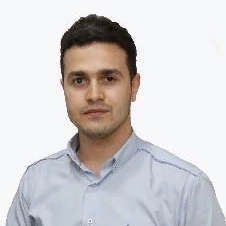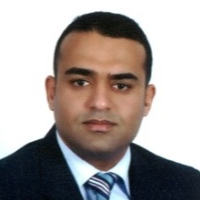International Journal of Image, Graphics and Signal Processing (IJIGSP)
IJIGSP Vol. 9, No. 10, 8 Oct. 2017
Cover page and Table of Contents: PDF (size: 895KB)
Score Fusion of SIFT & SURF Descriptors for Face Recognition Using Wavelet Transforms
Full Text (PDF, 895KB), PP.22-28
Views: 0 Downloads: 0
Author(s)
Index Terms
Speeded-Up Robust Features, Scale-Invariant Feature Transform, Discrete Wavelet Transform, Gabor Wavelet Transform
Abstract
Automatic face recognition is a major research area in computer vision which aims to recognize human face without human intervention. Significant developments in this field have shown that in many face recognition applications the automated techniques outperform humans. The conventional Scale-Invariant Feature Transform (SIFT) and Speeded-Up Robust Features (SURF) are used in face recognition where they provide high performances. However, this performance can be improved further by transforming the input into different domains before applying SIFT and SURF algorithms. Hence, we apply Discrete Wavelet Transform (DWT) or Gabor Wavelet Transform (GWT) at the input face images, which provides denser and extra information to be used by the conventional SIFT or SURF algorithms. Matching scores of SIFT or SURF from each subimage is fused before making final decision. Simulations show that the proposed approaches based on wavelet transforms using SIFT or SURF provides very high performance compared to the conventional algorithms.
Cite This Paper
Musa M.Ameen, Alaa Eleyan," Score Fusion of SIFT & SURF Descriptors for Face Recognition Using Wavelet Transforms", International Journal of Image, Graphics and Signal Processing(IJIGSP), Vol.9, No.10, pp. 22-28, 2017. DOI: 10.5815/ijigsp.2017.10.03
Reference
[1]R. Gottumukkal, V. K. Asari, “An improved face recognition technique based on modular PCA approach,” Pattern Recognition Letters, vol. 25(4), pp. 429-436, 2013.
[2]Z. Liu, Z. Xu, L. Hu, “A comparative study of distance metrics used in face recognition,” Journal of Theoretical & Applied Information Technology, vol. 5(2), pp. 324-332, 2009.
[3]M. Turk, A. Pentland, “Eigenface for recognition,” Journal of Cognitive Neuroscience, vol. 3(1), pp. 71-86, 1991.
[4]M. Pietikäinen, A. Hadid, G. Zhao, T. Ahonen, “Local binary patterns for still images,” Computer Vision Using Local Binary Patterns, pp. 13-47, 2011.
[5]K. Baek, B. A. Draper, J. R. Beveridge, K. She, “PCA vs. ICA: A comparison on the FERET data set,” Journal of Computer Information System, vol. 15(3), pp. 824-827, 2002.
[6]M. Abdul Muqeet, R. S. Holambe, "Enhancing face recognition performance using triplet half band wavelet filter bank", International Journal of Image, Graphics and Signal Processing (IJIGSP), vol. 8(12), pp. 62-70, 2016.
[7]N. A. Singh, M. B. Kumar, M. C. Bala, "Face recognition system based on SURF and LDA technique", International Journal of Intelligent Systems and Applications (IJISA), vol. 8(2), pp. 13-19, 2016.
[8]B. A. Draper, K. Baek, M. S. Bartlett, J. R. Beveridge, “Recognizing faces with PCA and ICA,” Computer Vision and Image Understanding, vol. 91(1), pp. 115- 137, 2003.
[9]A. Eleyan, H. Demirel, “PCA and LDA based neutral networks for human face recognition,” Face Recogniton, pp. 94-106, Rijeka, Croatia, In Tech, 2007.
[10]R. Steinhoff, B. Wongsaroj, C. Smith, A. Gallon, J. Franscis, “Improving eigenface face recognition by using image registration preprocessing methods,” Dept. of Computer Science and Mathematics, Florida Memorial University, Florida, USA.
[11]A. P. Ginsburg, “Visual information processing based on spatial filters constrained by biological data,” Air Force Aerospace Medical Research Lab, vol. 1/2, pp. 78-129, 1978.
[12]L. D. Harmon, “The recognition of faces,” Scientific American, vol. 229(2), pp. 71-82, 1973.
[13]J. Sergent, H. D. Ellis, M. A. Jeeves, F. Newcombe, A. Young, “Microgenesis of face perception,” Aspects of Face Processing, pp. 17-33, 1986.
[14]D. G. Lowe, “Distinctive image features from scale-invariant keypoints,” International Journal of Computer Vision, vol. 60(2), pp. 1-28, 2004.
[15]H. Bay, T. Tuytelaars, L. Gool, “SURF: Speeded Up Robust Features,” Proc. 9th European Conference on Computer Vision, pp. 404-417,May 2006.
[16]B. K. Bairagi, A. Chatterjee, S. C. Das, B. Tudu, “Expressions invariant face recognition using SURF and gabor features,” IEEE 3rd International Conference in Emerging Applications of Information Technology, pp. 170-173, 2012.
[17]A. Eleyan, H. Özkaramanli, H. Demirel, “Complex wavelet transform-based face recognition,” EURASIP Journal on Advances in Signal Processing, vol. 2008(1), pp. 1-13, 2008.
[18]F. Samaria, A. Harter, “Parameterization of a stochastic model for human face identification,” Proceedings of 2nd IEEE Workshop on Applications of Computer Vision, pp. 138-142, December 1994.
[19]A. Kasiński, A. Florek, A. Schmidt, “The PUT face database,” Image Processing & Communications, vol. 13(3-4), pp. 59-64, 2008.
[20]K. Ramesha, K. B. Raja, “Dual transform based feature extraction for face recognition,” IJCSI International Journal of Computer Science, vol. 8(2), pp. 115-124, 2011.

